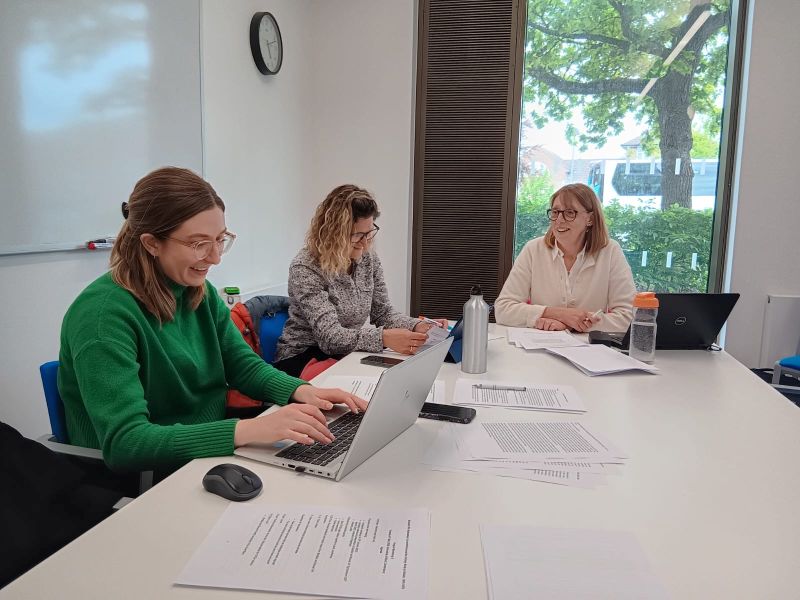
On 6th May 2025, the PI (Claire Jones) and Research Associate (Kate McAllister) met for the third time with project partners from Bladder and Bowel UK (Davina Richardson) and ERIC (Sarah Timms and Gina Jones) at the University of Kent in Canterbury.
Since the partners last met in December 2024, the project has progressed significantly. The meeting therefore began with Claire and Kate broadly summarising their key outputs since the beginning of the year, which included website posts on a range of topics, an academic workshop (report here), as well as an exhibition stand and presentation at the Bladder and Bowel UK Symposium. The partners reflected on the key issues and insights which emerged from the feedback forms distributed to attendees of the symposium, and on how this might help to develop historical resources to be used in current practice.
Claire and Kate then highlighted several forthcoming outputs. These include both academic and public outputs, such as journal articles, a monograph, as well as short, TikTok-style videos which are currently in development with ERIC. Aimed at schoolchildren aged 11-14, these videos will aim to bust current myths around urine incontinence through historical insights. Kate reflected on the possibilities and challenges of producing such resources, specifically in making sure they are both engaging but also discuss bladder health conditions with sensitivity. Claire finally highlighted future plans for an online exhibition which will trace the chronology of incontinence devices and their development.
The partners also discussed how to best produce resources to challenge current stigma. Focus was on nine primary sources, selected by Kate and divided into two sections: ‘Buzzers for Bedwetters’? and ‘Urine incontinence in the (elderly) adult’. The first five sources related to the development and use of enuresis alarms in the 1950s, showing how this led some doctors and users to express concern about cruelty, cost and the risk of further ‘disability’. Partners agreed that today, these alarms are more effective and pose less risk to users, though can still sometimes be expensive.
The final four sources shifted focus towards incontinence in the elderly, showing how in the 1960s, this condition became linked to the ‘state of mind’ of those providing care, rather than those receiving it. Discussions therefore centred on how this idea of incontinence related to particular healthcare concerns emerging at the intersection of medicine, social science and psychiatry during this period, informing a critique of institutional environments and the move towards care in the community. Partners considered whether such concerns redefined incontinence in the elderly as a condition that was preventable, if not curable, as well as the ways in which this idea was mediated by class.
As the meeting came to an end, the partners reflected on what has been learnt so far in the project and what can still be done. They agreed that in the next six months, focus should be on finalising outputs which help lay the foundations for further historical research into the leaky, urine incontinent body and collaborative work between academics and charities in the future.